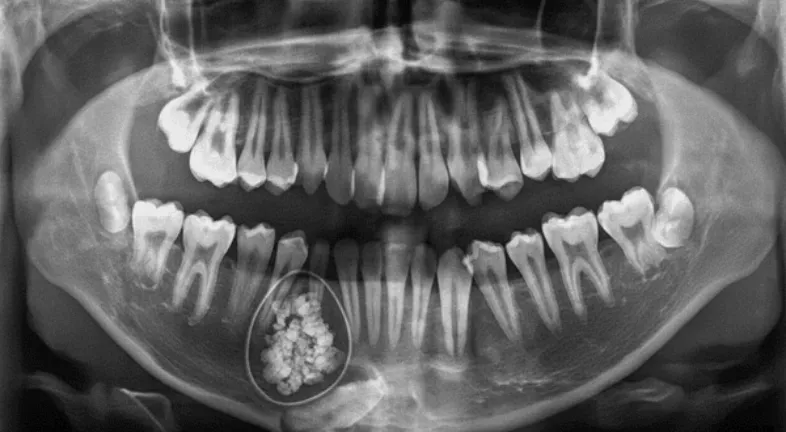
Thumb sucking is a common habit among infants and young children. While it often helps them feel comforted and secure, prolonged thumb sucking can lead to oral health issues. Parents often wonder whether this habit could damage their child’s teeth and, if so, what steps they should take to address it.
In this blog, we’ll explore how thumb-sucking impacts dental development, the potential risks it poses, and the steps you can take to encourage your child to break the habit.
Thumb sucking is a natural reflex that many infants begin even before birth. It’s a soothing behavior that helps children feel calm, particularly during times of stress or fatigue. However, if the habit continues past the age of 4-5 years old when permanent teeth begin to emerge, it may cause dental and orthodontic issues.

Children often suck their thumbs for comfort and reassurance. This behavior is completely normal during infancy and early childhood. It helps babies feel safe and relaxed, especially during stressful moments such as bedtime or separation from parents.
Common reasons include:Most children naturally stop thumb-sucking between ages 2 and 4, but some continue the habit for longer, which may lead to complications.
Thumb sucking typically becomes a concern when it persists beyond the toddler years. By the time permanent teeth begin to come in (around age 5 or 6), continued thumb sucking may interfere with dental development and alignment.
Key warning signs include:Thumb-sucking intensity matters too. Passive suckers, who simply rest their thumb in their mouth, are less likely to experience issues. Active thumb suckers, who apply pressure by vigorously sucking, are more likely to experience long-term damage.
Prolonged thumb sucking can have serious consequences for a child’s dental health, particularly if it continues as their adult teeth begin to emerge. Here are some of the most common risks associated with long-term thumb sucking.
Worried About Your Child's Teeth?
Take our free smile assessment to find the right clear aligner provider for treating thumb-sucking effects.
Start Free Assessment Today

One of the most noticeable effects of thumb sucking is dental misalignment. The constant pressure of the thumb on the upper palate and front teeth can push them out of alignment, leading to problems such as:
These issues often require orthodontic treatment, such as braces, to correct.
Thumb sucking can also affect the development of a child’s jaw. Prolonged sucking pressure may reshape the upper palate, causing it to become narrow. This can lead to:
Jaw-related complications often require more advanced orthodontic interventions, such as expanders, to correct.
Children who suck their thumbs for extended periods may develop weakened oral muscles. This can result in:
Weakened oral function can have long-term consequences, making it essential to address the habit early.
Frequent thumb sucking exposes the mouth to bacteria and germs from the hands, increasing the risk of:
This is especially concerning when children suck their thumbs after playing outdoors or during flu season.
When a child’s thumb-sucking habit continues past the time their permanent teeth begin to emerge, it can significantly affect their dental alignment and oral health. While baby teeth are more malleable and likely to recover after thumb-sucking stops, permanent teeth are less forgiving. Let’s take a closer look at how this habit can affect permanent teeth.
Overbite is one of the most common dental issues caused by thumb sucking. The forward pressure exerted by the thumb on the upper front teeth can cause them to protrude, leading to an uneven bite. This not only affects the appearance of the smile but can also make it difficult to close the mouth properly. Over time, this condition may require orthodontic treatment, such as braces, to correct.
Another common effect of prolonged thumb sucking is an open bite. This occurs when the upper and lower teeth do not touch when the mouth is closed, leaving a noticeable gap. The continuous presence of the thumb in the mouth prevents teeth from aligning naturally, which can result in challenges with biting and chewing food.
Thumb sucking can alter the natural shape of the palate, leading to difficulties in speech development. Children with a history of prolonged thumb sucking may struggle with articulation, particularly with sounds that require the tongue to touch the roof of the mouth, such as "t" or "d." This can cause frustration for the child and may necessitate speech therapy in addition to orthodontic care.
When thumb sucking persists into childhood and causes significant dental misalignment, the cost of correcting these issues can add up. Treatments such as braces, retainers, and even jaw expanders may be required to restore proper alignment. These costs are preventable with early intervention and breaking the habit before it causes lasting damage.
Breaking the thumb-sucking habit is essential to protect your child’s teeth and oral health. While it can be challenging, several strategies can help encourage your child to stop in a supportive and stress-free way.
One of the most effective ways to help a child stop thumb-sucking is by using positive reinforcement. Celebrate progress and reward your child when they successfully avoid thumb-sucking for a certain period.
Positive reinforcement helps build your child’s confidence and motivates them to continue working toward breaking the habit.
Sometimes, children may not realize when they’re sucking their thumb, especially during moments of stress or boredom. Gentle reminders can help bring their attention to the habit without causing embarrassment.
Consistency is key when using reminders. Over time, your child will become more aware of their behavior and work to change it.
Since thumb sucking often provides comfort, it’s important to offer your child alternative ways to self-soothe. Some ideas include:
By introducing these alternatives, you can help your child find new ways to feel secure without relying on their thumb.
For some children, thumb-sucking is a response to stress or anxiety. Identifying and addressing the root cause can make it easier for them to stop.
When your child feels less stressed, they may naturally reduce their thumb-sucking habit.
While many children can stop thumb-sucking with the right guidance and support, others may need professional help to break the habit. If thumb sucking persists despite your efforts, or if it is already causing noticeable changes in your child’s teeth or jaw, consulting with a dentist or orthodontist is a good idea.
Thumb sucking continues past the age of 5 or 6.
A dental professional can assess your child’s oral health and recommend solutions tailored to their needs. This may include custom appliances, such as thumb guards, or referrals to a behavioral therapist for additional support.

If thumb sucking has already affected your child’s teeth, early orthodontic intervention can help prevent further damage and also help with speech difficulties. Common teeth straightening treatments include:
Orthodontic treatment can restore your child’s smile and confidence, ensuring their teeth grow healthy and straight.
Thumb sucking is a natural habit for infants and young children, but it can become a problem if it continues into childhood. Prolonged thumb sucking can lead to dental issues such as misaligned teeth, jaw shape changes, and speech difficulties. The good news is that with patience, understanding, and the right strategies, most children can successfully break the habit. For those who need extra help, dental professionals can provide valuable guidance and treatment options to ensure their oral health remains on track.




Curated the best for your knowledge
 Odontomas: What They Are and How They're Treated
Odontomas: What They Are and How They're TreatedSome dental conditions are quiet. Too quiet, in fact. Odontomas fall into that category. They rarely make noise, yet they change things beneath the surface. And people usually have no idea about them. While malocclusions, teeth shifting, discoloration, or other cosmetic dental issues are fairly well known, odontomas are not. So, an odontoma is technically a type of tooth tumor. It’s benign, harmless, but oddly structured. Hence, it can interfere with tooth eruption, displace teeth, or cause swelling. However, there’s more to it. Here’s a deeper dive.
Read More.webp) Gingivitis Treatment: How to Reverse Early Gum Disease
Gingivitis Treatment: How to Reverse Early Gum DiseaseGingivitis tends to creep up quietly, usually after a stretch of rushed brushing or nights where flossing just slips your mind. The first sign is often bleeding when you spit toothpaste into the sink. That moment makes people Google how to cure gingivitis, which is honestly the right instinct. Early gum inflammation happens because plaque irritates the tissue around the teeth. If you respond quickly, it is fully reversible. Most cases improve quickly with proper cleaning, hydration and small tweaks in daily habits. The key is not ignoring those early red or puffy gum signals.
Read More.webp) Metallic Taste in Mouth: Causes and How to Get Rid of It
Metallic Taste in Mouth: Causes and How to Get Rid of ItHaving metal taste in the mouth first thing in the morning can be an unexpected experience. You wake up, take a swallow, and suddenly have a metallic taste in your mouth, as if you'd been chewing on a handful of change. It's annoying, a little scary, and sometimes for no apparent reason. For some people, it will be nothing but a minor nuisance; others may fall into the late-night goose chaser. Sometimes it's a sign that there is something wrong with your braces; other times, it could mean that there is something wrong with one of your teeth. But here's the good news: Most metallic tastes are temporary, harmless, and can be treated or resolved. So let's take a closer look at the possibilities.
Read MoreQuick Links

Heading